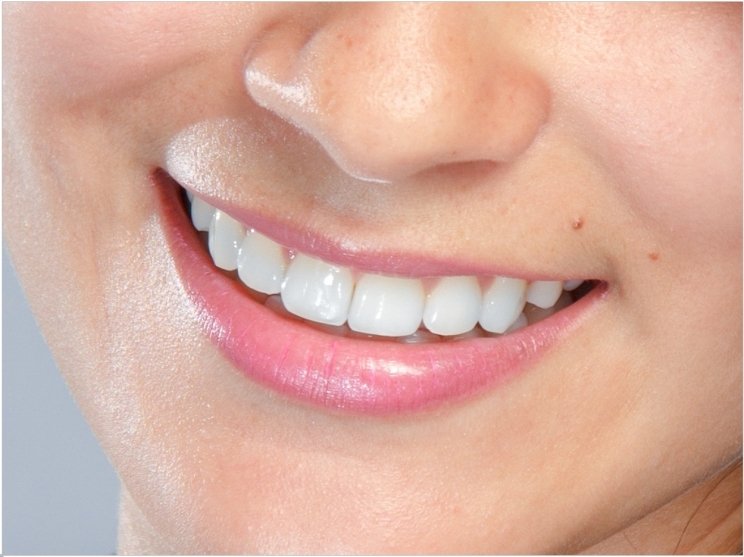
Today’s patients use over-the-counter products or go right to the dentist when they want to whiten their teeth, even though these techniques ultimately may damage the dentition. A team of researchers from Nanchang University in China, however, has developed a less destructive method.
The most common bleaching agent, hydrogen peroxide, steals electrons from the pigment molecules that discolor teeth. Exposing teeth to blue light can accelerate this process. But high concentrations of hydrogen peroxide can break down the enamel, causing sensitivity or cell death.
The researchers modified titanium dioxide nanoparticles with polydopamine (nano-TiO2@PDA) so they could be activated with blue light. In a proof-of-concept experiment, the nano-TiO2@PDA particles were evenly coated on the surface of a tooth and irradiated with blue light.
After four hours, the whitening level resembled that obtained with hydrogen-peroxide-based agents. No significant enamel damage was found on the tooth surface, and the treatment was significantly less cytotoxic than hydrogen peroxide. The nano-TiO2@PDA therapy also showed antibacterial activity against certain bacteria.
The study, “Blue-Light-Activated nano-TiO2@PDA for Highly Effective and Nondestructive Tooth Whitening,” was published by ACS Biomaterials Science & Engineering.
Related Articles
Authorities Crack Down on Illegal Tooth Whitening
Permanent Teeth Whitening Eclipses Bleaching Methods
The Wonderful World of Teeth Whitening











